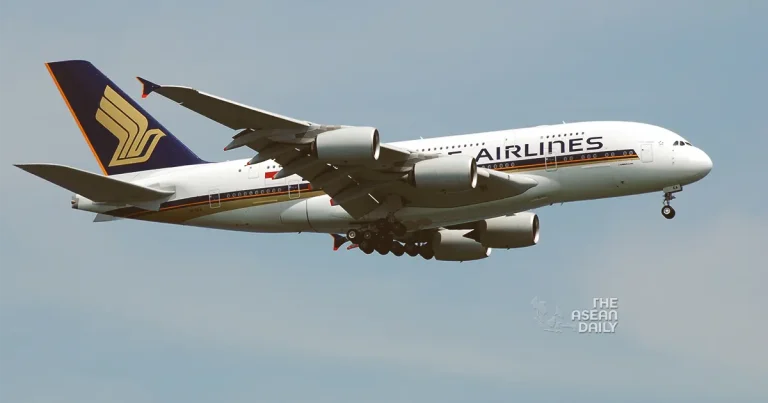30-5-2024 (SINGAPORE) The recent implementation of Singapore Airlines’ (SIA) enhanced in-flight safety protocol, mandating the suspension of meal service and the mandatory buckling up of cabin crew during turbulence, has sent ripples through the aviation community, prompting adjustments from both passengers and staff alike. While most acknowledge the necessity of such measures, frequent flyers and industry insiders have raised concerns about the potential implications on service quality and crew well-being.
The new regulations, swiftly enacted in the wake of the tragic Flight SQ321 incident from London to Singapore on May 21, where severe turbulence claimed the life of one passenger and left dozens injured, have already begun to reverberate across SIA’s operations. Previously, only hot beverages and soups were prohibited during periods of turbulence, with service continuing at the crew’s discretion. However, under the revised guidelines, meal service must now be completely paused when the seatbelt sign is illuminated.
A civil servant, identified only as Matthew, 32, expressed understanding for the prioritization of safety but acknowledged the potential impact on both crew and passengers, particularly on short-haul flights. “It just seems like a knee-jerk reaction since it was implemented so quickly,” he remarked. “Some crew members I’ve spoken with are stressed out about whether there will even be sufficient time to complete the entire meal service.”
Indeed, meal timings have been affected, with reports of passengers experiencing multiple disruptions and delays during their flights. Engineer Zac Tng, 30, recounted his recent journey from Seattle to Singapore, where his in-flight meal was postponed thrice due to turbulence, leading to a 1½-hour wait for his first meal.
Aaron Wong, founder of the travel website MileLion, who flew business class from Paris to Singapore on May 22, noted that his second meal, breakfast, was served a staggering six hours before arrival, as crew members aimed to preemptively buffer time for potential service disruptions.
Cabin crew members, speaking anonymously, corroborated the increased stress levels and fatigue associated with the new protocol. One flight attendant estimated that over an hour of turbulence on a recent 3½-hour Singapore-India route left minimal time for meal service, leading to dissatisfaction among some passengers who perceived the service as subpar.
While the changes have undoubtedly posed challenges, passengers and crew alike have demonstrated proactive measures to enhance cabin safety. University student Kelsy Koh, 22, recounted tightening her seatbelt more diligently during her recent flight from Paris, a habit echoed by fellow travelers who refrained from unbuckling even when permitted.
Cabin crew have also observed a newfound vigilance among passengers, who are less likely to congregate unnecessarily and more inclined to promptly return to their seats when instructed.
As climate change increases the likelihood of phenomena like clear air turbulence, airlines may need to reevaluate their service protocols to prioritize safety. John Tan, a professional officer at the Singapore Institute of Technology, acknowledged the importance of adaptability in aviation safety, stating that “prompt responses are necessary to protect passengers and crew effectively.”
However, Tan also recognized the challenge SIA faces in balancing safety and service quality, suggesting potential solutions such as retraining cabin crew for efficiency or restructuring cabin layouts.
Shukor Yusof, founder of aviation consultancy Endau Analytics, expressed confidence in SIA’s ability to maintain service excellence, emphasizing that the decision was carefully considered and driven by an urgent need to prevent future injuries.




